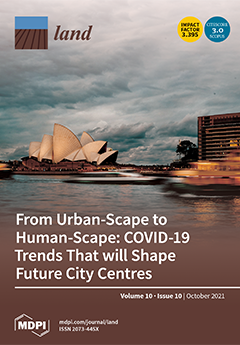Open AccessEditor’s ChoiceArticle
Four Years Continuous Monitoring Reveals Different Effects of Urban Constructed Wetlands on Bats
by
Han Li, Radmila Petric, Zinah Alazzawi, Jake Kauzlarich, Rania H. Mahmoud, Rasheed McFadden, Niklas Perslow, Andrea Rodriguez Flores, Hadi Soufi, Kristina Morales, Matina C. Kalcounis-Rueppell, Malcolm D. Schug and Lindsey A. Zarecky
Cited by 6 | Viewed by 3454
Abstract
Proactive artificial wetland constructions have been implemented to mitigate the loss of wetlands and their ecosystem services. As wetlands are habitats for bats, short-term (one or two years) studies find that constructed wetlands can immediately increase local bat activity and diversity. However, it
[...] Read more.
Proactive artificial wetland constructions have been implemented to mitigate the loss of wetlands and their ecosystem services. As wetlands are habitats for bats, short-term (one or two years) studies find that constructed wetlands can immediately increase local bat activity and diversity. However, it is not clear how constructed wetlands affect bats through time while the wetlands are aging. We collected four years of continuous bat acoustic monitoring data at two constructed wetlands in an urban park in Greensboro, NC, USA. We examined bat activity and community composition patterns at these wetlands and compared them with reference sites in the city. With four years of data, we found that the effects of constructed wetlands were both habitat- and species-specific. The wetland in forests significantly increased bat activity, while the wetland in the open grass altered bat community composition. Specifically, in terms of species, we found that over time, constructed wetlands no longer attracted more big brown, silver-haired, or evening bats than control sites while the wetlands aged, highlighting the need to study broadly how each bat species uses natural and artificial wetlands. We emphasize the importance of long-term monitoring and the periodical evaluation of wildlife conservation actions.
Full article
►▼
Show Figures





